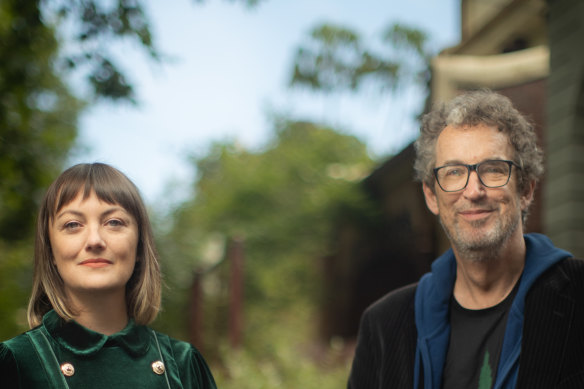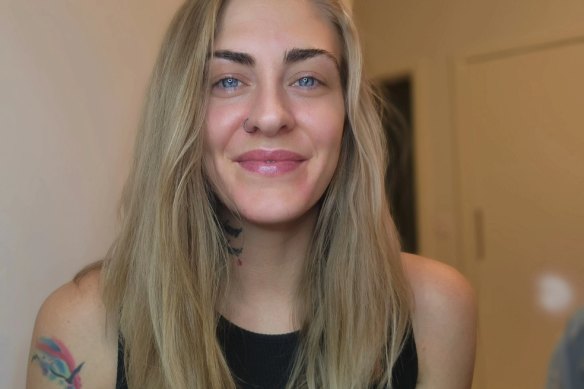By Rachel Eddie
Medicinal cannabis users will be put behind the wheel on a closed track to test when they can drive safely as part of an 18-month trial next year.
But Legalise Cannabis MPs say this process will take too long and medicinal cannabis patients need to be treated like any other patient taking prescription medication.

Rachel Payne and David Ettershank, members of the Legalise Cannabis Party.Credit: Simon Schluter
Labor will introduce a bill later this year to facilitate the trial, which is expected to go ahead from early 2024 on a closed track – not on public roads – once the bill passes into legislation.
The proposed trial, which could dictate changes to the law to allow Victorians with a prescription to drive when safe, does not remove the ban on driving under the influence of cannabis.
Victoria became the first state to approve medicinal cannabis in 2016. But unlike Tasmania, there is no exemption for patients driving while unimpaired.
Drivers are only tested for the presence of tetrahydrocannabinol (THC), not whether they are impaired. Given cannabis can remain in a person’s system for days, it means a patient is banned from driving long after they became unimpaired from the doctor-prescribed medication.
Premier Daniel Andrews and opposition MPs indicated support for a solution after the Legalise Cannabis Party introduced a bill in February to allow medicinal cannabis patients with THC in their system to drive if they are not impaired, like any other medication.
On Sunday, Legalise Cannabis MPs Rachel Payne and David Ettershank welcomed the trial but hoped for a faster solution and were frustrated the trial replicated others.
“The bottom line is to see a medicinal cannabis patient treated like any other patient taking prescription medication, and we will continue to advocate for this outcome as quickly as possible,” Payne said.
Ettershank said doctors should be advising their patients on when it’s safe for them to drive after using medicinal cannabis.
“Imagine if every time there was a new drug produced, like a new painkiller or antihistamine, it had to go through this process?”

Mother-of-two Alice Davy said she feels safer driving while using prescription cannabis than other pharmaceuticals.
The Department of Transport and Planning has started planning for the trial, and the state will work with clinicians to develop a tool for prescribers for determining when it is safe and unsafe to drive.
Melbourne-based mother Alice Davy has used medicinal cannabis for more than four years to manage stage four endometriosis and multiple sclerosis after previously relying on other prescription drugs she felt were dangerous, did not resolve her pain, and made her feel “doped up”.
“Because of cannabis I can run again, and walk because of cannabis. I can do all of these things because of cannabis that I thought I’d never be able to do again,” Davy said.
THC is the psychoactive ingredient of cannabis, which gives the feeling of being “high”. Cannabidiol, or CBD, does not have the same psychoactive effect. Both are used in different levels as treatments for conditions such as cancer-related symptoms, chronic pain, anxiety and sleep disorders.
Davy takes THC at night and then CBD during the day so that she can drive when she does not feel impaired.
“I would never, ever drive impaired,” Davy said. “You’re taking away someone’s life by not allowing someone to drive on a prescribed medication.”
Associate Professor Vicki Kotsirilos, Australia’s first authorised GP prescriber of medicinal cannabis, said doctors and patients were not aiming for a “high” or drowsiness, unless it was taken as a sedative at night for sleep disorders.
“Usually, it’s when GPs have tried everything as a last resort treatment,” Kotsirilos said.
“Patients don’t want to feel impaired. These patients want to get on with their lives, they want to work, they want to study, they want a clear mind.”
Kotsirilos, who previously participated in a state government working group on medicinal cannabis and driving, said driving restrictions commonly stopped people from taking the medication. Others relied on taxis or carers to get around as a result.
A Victorian government spokeswoman said safety was the No.1 priority.
“Safety on our roads is our No.1 priority – and this closed track trial will help expand the evidence base on the impairment medicinal cannabis causes on driving while ensuring the safety of all road users,” she said.
There have been almost 102,000 prescriptions provided in Victoria between 2018 and July this year, according to data from the Therapeutic Goods Administration. Almost 30,000 of those prescriptions were provided since January.
The Morning Edition newsletter is our guide to the day’s most important and interesting stories, analysis and insights. Sign up here.